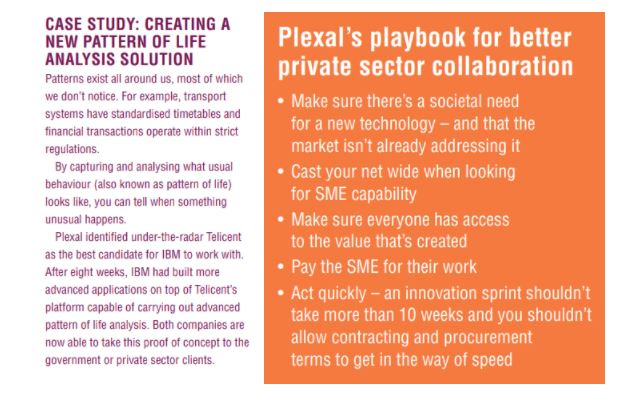The government’s Integrated Review of Security, Defence, Development and Foreign Policy made it clear that regaining technological advantage when it comes to key areas like AI and quantum computing is a top priority, and that unlocking innovation at home is in the national interest. And its most recent National Cyber Strategy sets out its aim of taking a whole-of-society approach when addressing cyber security challenges that affect individuals, the economy and critical national infrastructure.
These are mission-critical goals that policymakers recognise can’t be left to market forces alone – they require ambitious funding and strategic direction. But as chancellor Rishi Sunak himself admitted in his latest budget, the government has its limits when it comes to enabling research and development that spurs innovation.
The problem is, self-financed R&D among businesses as a percentage of GDP is less than half the OECD average. And not all of that will be funnelled into UK-based projects, companies and technology.
Innovation company Plexal sees this as a challenge it’s willing to take on. It’s mobilising the research and development budgets of tech giants in the private sector to solve challenges that the government has identified – but the market hasn’t solved yet. It’s most recent project with IBM – the Mission Technology Integrator – is an ongoing initiative that’s allowing IBM to develop initial proofs of concepts with SMEs in response to specific government challenges. The first two sprints saw the creation of new technology solutions relating to patterns of life analysis and automating the analysis of CCTV footage to improve public safety. Another proof of concept project has just begun that’s exploring Internet of Things devices when they’re intermittently connected to networks.
“This is a hugely exciting way for us to build new offerings with SMEs in a really focussed way. We’re developing, integrating and exploiting new mission capabilities at pace,” explains Ed Gillett, client partner at IBM. “By joining forces we’re creating new technology and new ideas that we couldn’t have done on our own.”
The Mission Technology Integrator also removes some of the barriers that typically stop SMEs from becoming a government supplier or partnering with a large tech company – while making sure large companies are incentivised to spend their R&D budgets in the UK.
“The relationship between startups or SMEs and Big Tech is often fraught and characterised by a lack of trust,” says Andrew Roughan, managing director of Plexal. “We’ve helped IBM find those one in 5.6 million SMEs relevant to a very specific innovation opportunity. We designed terms of the engagement that made sure everyone’s interests were taken care of – the SME got paid for their work and had full access to the value that was created. That’s extremely unusual.”
The government is already laying the groundwork for innovation through its tax reliefs for investing in startups, its R&D expenditure and reforms to listings rules. But does this go far enough?
Plexal and IBM believe their model will be crucial to unlocking the potential that exists in the private sector to find technology being developed by small companies, pair it with a large company’s capabilities and point it towards a challenge that’s in the public interest. And it's this three-way collaboration that will stem the flow of private sector innovation budgets going elsewhere.
“This model of government-led innovation is critical for us to become a technology superpower capable of addressing some very pressing threats,” says Roughan. “We don’t want to be in a situation where the technology that shapes so much of our lives is created in a vacuum without any direction from the government. The role of the government here is to set the objectives and support this sort of private sector co-creation.”
For more information about the Mission Technology Integrator and the upcoming sprints, go to plexal.com/IBM
